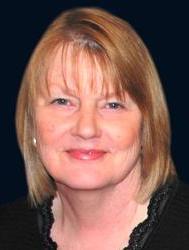Patty Craig: A Slice of Time
U.S. health care is at its best, but we’re also taking more drugs than ever. The U.S. population has access to a wide variety of over-the-counter (OTC) drugs, and prescription drug use has risen steadily in recent years.
OTC medicines can be bought without a doctor’s prescription. They may be used to treat or prevent common health problems, such as nausea. However, sometimes OTC medicines can cause adverse effects and allergic reactions. Although OTC medicines have a low risk of adverse effects when used occasionally and properly, anyone can experience an adverse effect from a medicine. Side effects are effects that medicines have on your body that don’t help your symptoms and may be unpleasant. Certainly, those effects or symptoms should be reported to your doctor (http://familydoctor.org/familydoctor/en/drugs-procedures-devices/over-th...).
Prescription drugs – those medicines requiring a doctor’s order – are also commonly used. Some statistics (2007-2008 data) about U.S. prescription drug use are listed below:
• About 48% of Americans take at least one prescription drug.
• One of every five children and nine out of 10 older Americans reported using at least one prescription drug in the month prior to being surveyed.
• Prescription drug use increased with age; women were more likely to use such medications than men; and the non-Hispanic white population had the highest prescription drug use.
• According to this data, some of the most commonly used drugs were: (a) penicillin antibiotics, (b) bronchodilators for children, (c) central nervous system stimulants for youths, and (d) antidepressants, cholesterol-lowering drugs, and diuretics and beta-blockers to treat high blood pressure and heart problems for adults (http://www.webmd.com/news/20100902/prescription-drug-use-on-the-rise-in-...).
In 2009, physician’s office visits resulted in 2.6 billion drug orders, and hospital outpatient department visits resulted in 255 million drug orders (http://www.cdc.gov/nchs/data/ahcd/namcs_summary/2009_namcs_web_tables.pdf; http://www.cdc.gov/nchs/data/ahcd/nhamcs_outpatient/2009_opd_web_tables.pdf).
Drugs have also become a humorous subject:
• A miracle drug is any drug that will do what the label says it will do. ~Eric Hodgins
• A miracle drug is one that has the same price as last year. ~Unknown
• A lady asked a pharmacist: "Why does my prescription medication have 40 side effects?"
The pharmacist replied: "Cause that's all we've documented so far." ~Unknown
• Drugs. I can take them or leave them. But, they're much more effective when I take them. ~Ronnie Shakes
Modern health care, including prescription and OTC drugs, helps us to have better quality of life and to live longer. And, based on these statistics, I believe my niece, a third-year pharmacy student, will be able to find employment.
- Log in to post comments



























